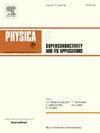Comparison of critical current and AC loss of 15 MVA superconducting machines with different topologies
IF 1
3区 物理与天体物理
Q4 PHYSICS, APPLIED
Physica C-superconductivity and Its Applications
Pub Date : 2025-02-20
DOI:10.1016/j.physc.2025.1354664
引用次数: 0
Abstract
Superconducting motors, characterized by their high current-carrying capacity, facilitate the exploration of varied topological designs beyond those possible with traditional motors. Nevertheless, many studies fail to account for the anisotropic properties of superconducting coils, resulting in inaccurate analyses of critical currents and AC losses. This paper introduces a simulation model for 15 MVA superconducting motors employing the H-formulation, which methodically assesses how the configurations of stator and rotor cores impact motor performance. The magnetic behavior of the rotor core, defined through the - curve derived via the ring sample method, is integrated into the model, enhancing its accuracy. The results reveal that incorporating rotor back core not only reduces the use of superconducting tape but also bolsters the magnetic field adjacent to the coil, thus improving its current-carrying capacity. This approach maximizes output capacity with minimal variations in excitation current. In contrast, including magnetic teeth in the stator curtails superconducting tape consumption and AC losses, it introduces space harmonics that elevate cogging torque. The study determines that the optimal topology combines stator and rotor back core while excluding magnetic teeth in both windings. Finally, a prototype of real-scale racetrack a high-temperature superconducting winding is manufactured, and the critical current within the different core structures is measured to validate its performance.
不同拓扑结构的15 MVA超导电机临界电流和交流损耗的比较
超导电机以其高载流能力为特点,有助于探索传统电机无法实现的各种拓扑设计。然而,许多研究未能考虑超导线圈的各向异性特性,导致对临界电流和交流损耗的分析不准确。本文介绍了一个采用h公式的15 MVA超导电机仿真模型,该模型系统地评估了定子和转子铁芯的配置对电机性能的影响。通过环样法导出的B-H曲线定义转子铁芯的磁性行为,并将其集成到模型中,提高了模型的准确性。结果表明,加入转子背铁芯不仅可以减少超导带的使用,而且可以增强线圈附近的磁场,从而提高其载流能力。这种方法在励磁电流变化最小的情况下使输出容量最大化。相比之下,定子中的磁齿减少了超导带的消耗和交流损耗,但引入了空间谐波,提高了齿槽转矩。研究确定了最优拓扑结构将定子和转子后铁心结合在一起,同时排除两个绕组中的磁齿。最后,制作了一个真实尺寸的赛道高温超导绕组样机,并测量了不同铁芯结构内的临界电流以验证其性能。
本文章由计算机程序翻译,如有差异,请以英文原文为准。
求助全文
约1分钟内获得全文
求助全文
来源期刊
CiteScore
2.70
自引率
11.80%
发文量
102
审稿时长
66 days
期刊介绍:
Physica C (Superconductivity and its Applications) publishes peer-reviewed papers on novel developments in the field of superconductivity. Topics include discovery of new superconducting materials and elucidation of their mechanisms, physics of vortex matter, enhancement of critical properties of superconductors, identification of novel properties and processing methods that improve their performance and promote new routes to applications of superconductivity.
The main goal of the journal is to publish:
1. Papers that substantially increase the understanding of the fundamental aspects and mechanisms of superconductivity and vortex matter through theoretical and experimental methods.
2. Papers that report on novel physical properties and processing of materials that substantially enhance their critical performance.
3. Papers that promote new or improved routes to applications of superconductivity and/or superconducting materials, and proof-of-concept novel proto-type superconducting devices.
The editors of the journal will select papers that are well written and based on thorough research that provide truly novel insights.

 求助内容:
求助内容: 应助结果提醒方式:
应助结果提醒方式:


